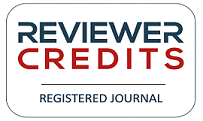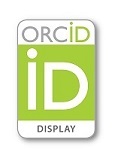Authors need to register with ASJP (Algerian Scientific Journal platform) prior to submitting or, if already registered, can simply log in.
Author Guidelines
The Advanced Research in Economics and Business Strategy Journal (AREBUS) welcomes submissions of original research articles, reviews, and case studies in economics, business strategy, and related disciplines. Below are detailed guidelines to help authors prepare and submit their manuscripts.
1. Submission Requirements
-
Originality: Manuscripts must be original, unpublished, and not under consideration elsewhere.
-
File Format: Submit manuscripts in Microsoft Word (.doc or .docx) format.
-
Length: Articles should typically be between 5,000 and 8,000 words, including references, tables, and figures.
-
Please use this template as a guide when preparing your submission:
2. Manuscript Structure
Manuscripts should include the following sections in the order listed below:
-
Title Page
-
Title: Concise and descriptive (maximum 15 words).
-
Author Information: Full names, academic degree affiliations, and email addresses of all authors.
-
Corresponding Author: Indicate the corresponding author with an asterisk (*) and provide their contact details.
-
ORCID ID: Include ORCID IDs for all authors.
-
-
Abstract
-
Provide a concise summary of the manuscript (150–250 words).
-
Include the research objectives, methodology, key findings, and implications.
-
-
Keywords
-
Include 5–7 keywords that reflect the main themes of the manuscript.
-
-
Introduction
-
Clearly state the research problem, objectives, and significance of the study.
-
- Literature review Provide a literature review to contextualize the research.
-
Methodology
-
Describe the research design, data collection methods, and analytical techniques.
-
Ensure reproducibility by providing sufficient detail.
-
-
Results
-
Present the findings of the study in a clear and logical manner.
-
Use tables, figures, and charts where appropriate.
-
-
Discussion
-
Interpret the results and discuss their implications.
-
Compare findings with existing literature and highlight contributions to the field.
-
-
Conclusion
-
Summarize the main findings and their significance.
-
Suggest directions for future research.
-
-
Acknowledgments (if applicable)
-
Acknowledge funding sources, institutions, or individuals who contributed to the research.
-
-
References
-
List all references in alphabetical order, following the APA style.
-
Ensure all in-text citations are included in the reference list and vice versa.
-
-
Appendices (if applicable)
-
Include supplementary materials, such as questionnaires, datasets, or additional analyses.
-
3. Tables and Figures
-
Tables: Number tables sequentially (e.g., Table 1, Table 2) and provide a descriptive title above each table.
-
Figures: Number figures sequentially (e.g., Figure 1, Figure 2) and provide a descriptive caption below each figure.
-
Format: Ensure tables and figures are clear, legible, and embedded within the manuscript.
4. Citations and References
-
In-Text Citations: Use the author-date format (e.g., Smith, 2020).
-
Reference List: Follow the APA style. Examples:
-
Journal Article:
Smith, J., & Johnson, L. (2020). Title of the article. Journal Name, Volume(Issue), Page Range. https://doi.org/xxxx -
Book:
Brown, T. (2019). Title of the book. Publisher. -
Website:
Author, A. (Year). Title of the webpage. Website Name. URL
-












